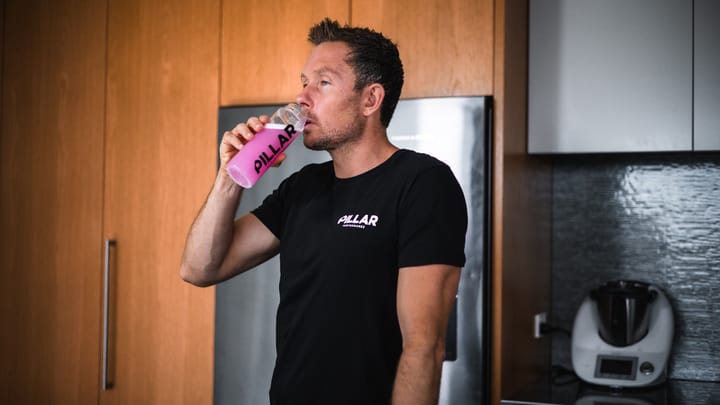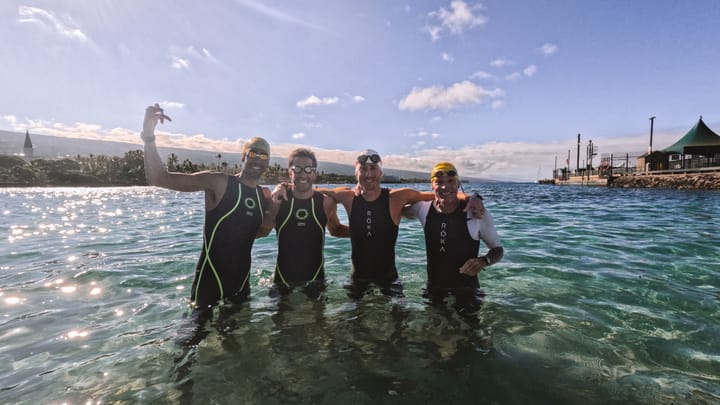Pete Jacobs’ Guide to Conquering Kona
Pro triathlete Pete Jacobs shares strategies for mental preparation, handling external conditions, navigating the mass swim start, combating headwinds, and enduring the challenging Kona marathon.

For age-group athletes, the Ironman World Championship is Mount Everest. You sacrifice so much and work so hard through training and the qualifying events just to reach one race with hundreds of similarly dedicated athletes. But with the veneration that comes with Kona comes intense pressure. A pressure that cannot simply be trained for.
Australian professional triathlete Pete Jacobs knows all about the anxiety such a big event can create, having won this very race in 2012. He says overcoming the mind games on race day is about self-belief.
“It’s all about the preparation mentally. That includes having the confidence to stick to your race plan, not someone else’s,” he said.
“Race according to how you train; you do that with nutrition, racing and mental preparation, so stick to the plan you’ve practised. You can’t control how fast everyone else goes, but if you back yourself and believe in yourself you’ll do as good as you can do, and that’s all any of the elites (athletes) are trying to do.”
Jacobs also emphasises the importance of organisation, citing the abundance of distractions that take place in the lead-up to race day. There are festivals, dinners and exhibitions, which can quickly absorb your precious time.
“Have a good list of things you need to get done and do them as early as possible in race week. It goes really fast once everyone’s there and things start happening,” he said.
“If something comes up or you realise your race wheels aren’t shifting enough then suddenly you are busy three days out from the race. Have everything sorted as early as possible and tick all of the boxes.”
External conditions
Kona is known for oppressive heat and stifling humidity. For anyone attempting this race for the first time, the conditions might literally punch you in the face. Jacobs has the luxury of training in Noosa, which provides him with enough hot days to train his mental resilience under challenging conditions. He suggests some last-minute sessions in the lead-up to the race to help acclimatise your body and your mind.
“Most people when they get over there they’ve got enough time to get a few sessions in practising tricks to block out the heat mentally, to tell yourself it’s not that hot. If you focus on the heat, you’re going to feel it. Instead, focus on the sound of your feet hitting the pavement or your breathing,” he said.
“It all comes down to how you deal with it mentally and trying to use cues that you can practice to take yourself out of your own body.”
Make a splash
The mass swim start is an adrenaline rush for some but confronting for others. If you’re hesitant about getting crushed or kicked in the water identify a starting point that won’t be so congested.
“If you start in the middle there’s a good chance people will surge in toward you as you get closer to the first buoy,” Jacobs said.
“If you find space on the outside you’re probably going to have an easier swim and stay out of trouble. Be relaxed in the water, turn around and have a look at the crowd because it’s the greatest moment of the year – that calmness where there’s nothing left to do and everything is ahead of you. Your whole journey (to Kona) has gone into this moment, so it’s nice to take it in for a few seconds.”
Headwinds on the highway
The Queen Ka’ahumanu Highway is exposed to the intense winds of the west coast of the Big Island. These gusts vary in intensity but have the potential to blow you off the road. Jacobs says it’s best not to fight Mother Nature.
“The best thing to do is to keep pedalling. Keep pedalling when the wind blows against you because keeping the pressure on the pedals will help stabilise you,” he said.
“The wind changes constantly and everyone is in the same boat. Some 70-year-old women get through it, and you just have to keep moving forward as best you can.”
Running on empty
This is where the heat and humidity really takes its toll but another factor to be wary of are numerous challenging ascents, including a climb up Palani Road back to the Queen Ka’ahumanu Highway. Jacobs advises keeping your heart rate at the front of your mind during these tricky hills.
“Don’t run the hills hard, keep your heart rate down. If you go too hard on the hills and your heart rate spikes it becomes really taxing, and you won’t be able to control it,” he said.
“Take the uphills steady and walk the aid stations if your anxiety is up – get your breath back and release the tension before resetting your mind and running like it’s the start of the leg… it will do you a world of good.”





Comments ()